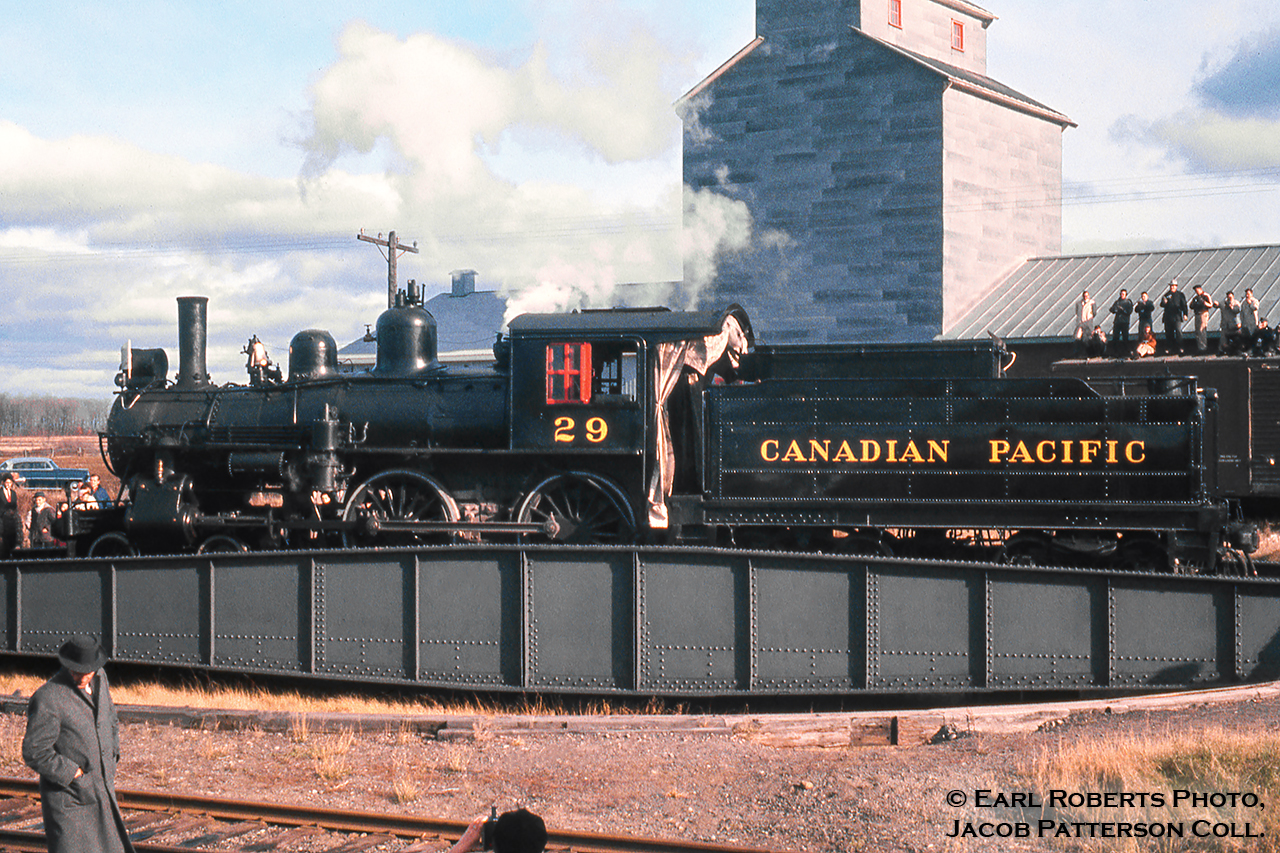|
Caption: Canadian Pacific 29, one of the three famed 4-4-0s from New Brunswick takes a spin on the table at Saint-Lin-Laurentides, Quebec for its return trip to Montreal where its fire will be dropped for the last time. November 6, 1960 marked the final day of CPR steam operation (until 2816 in 2001), and the occasion was marked with #29 leading an excursion from Montreal to Saint-Lin, a 74-mile total round trip via the Park Avenue, Ste. Agathe, and St. Lin Subdivisions. A small ceremony was held near St. Lin Junction as the following day would mark the 75th anniversary of the driving of the last spike at Craigellachie, British Columbia.
Built at CPR’s Delorimier Shops (Montreal) in 1883 as A-1-e CPR 390, the locomotive would be renumbered 217 in 1908, and finally 29 in 1913. After retirement in 1960, the locomotive would be donated to the CRHA, later being sent to the Salem & Hillsborough Railway in New Brunswick where in 1994 it would suffer major damage in a roundhouse fire caused by arson. Fortunately, Canadian Pacific recognized the heritage of this locomotive, acquiring it for cosmetic restoration in 1996 and placing it on display at their company headquarters in Calgary. With headquarters moving from downtown out to Ogden in 2012, the locomotive remained downtown until June 2017, when it too made the trek to Ogden for cosmetic restoration.
The 15.1-mile St. Lin Sub was built in 1877 with the first train operating on November 6 of that year (83 years to the date of this photo). Originally the line had been chartered on December 24, 1872 as the Montreal & Laurentian Colonization Railway, branching off of the Montreal Northern Colonization Railway (later CPR Ste. Agathe Sub) at St. Lin Junction, and was to be constructed after the main line to St. Jerome was completed (October, 1876). The line was renamed the Laurentian Railway Company on January 28, 1874 and would later be purchased by the eastward expanding CPR on March 13, 1882. Passenger service ended on March 29, 1956 with the last train being hauled by G-2-s Pacific 2580 and the line would be abandoned October 1, 1963, torn up before year’s end. The grain elevator behind would survive until late 2016/early 2017, removing all traces of the area’s past uses.
Earl Roberts Photo, Jacob Patterson Collection slide.
|



A wonderful image with an excellent narrative. Well done!
I saw this locomotive both before and then after the terrible fire. At the time, the jacketing and cab had been scorched of paint and the timbers in the pilot and tender were nothing but ash. Whether she could be restored to service with a healthy injection of cash, we may never know. Thank God she was preserved post-fire. The real loss included some very valuable and historically important passenger cars, simply reduced to tortured metal. The fire was an insurance fraud, and the cost was incomprehensible.